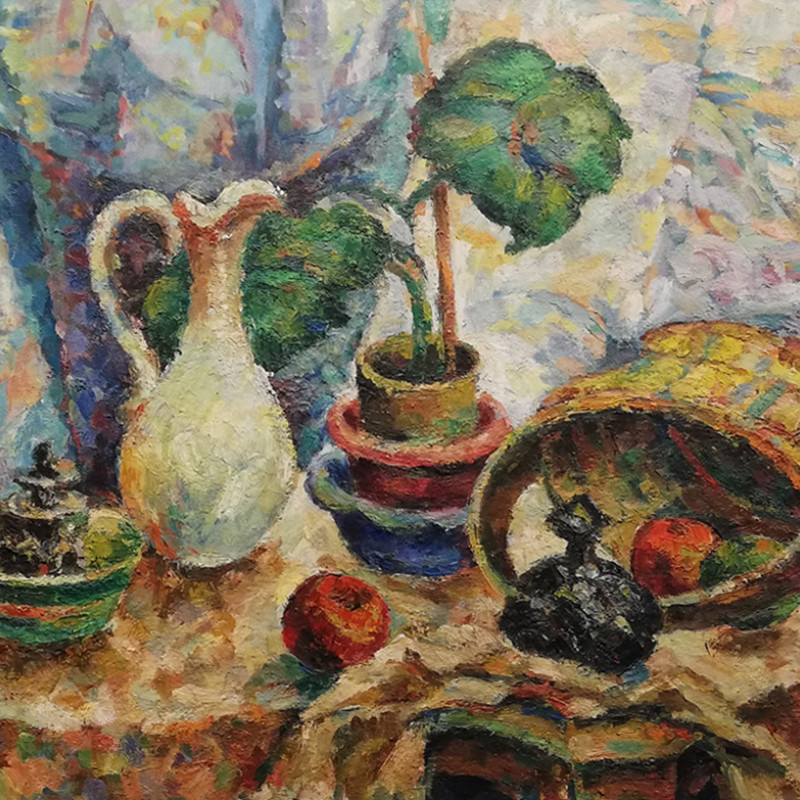“I would like to be an architect, sculptor and painter all at once”, declared an ambitious Joseph Giunta in a Quebec newspaper in 1965. Joseph Giunta, a Canadian Italian artist of Sicilian origin, was born in Montreal Canada in 1911. He maintained an artistic career of over seventy years and studied at the Monument National(1925) and at the École des Beaux-Arts de Montreal(1930). He also studied abroad in Boston, France and Italy. At the age of twenty, he was accepted into the 1931 Art Association’s Salon du Printemps at the Museum of Fine Arts and again for the next thirty years(1931-1962). As well, he participated in many solo and group exhibitions, such as Quebec’s Pavilion at the Osaka World’s Fair(1970).
For the first half of his career, Giunta was primarily influenced by impressionism, fauvism and Canadian artists like the Group of Seven. In 1958, when Giunta turned more towards abstraction and mixed media, he was primarily influenced by Paul Klee, Picasso and Marcel Duchamp, among others. Giunta’s style evolved into four major categories: Figuration(1931-1958), Gestural Abstraction(1958-1975), Geometric and Baroque Constructions(1971-1989) and Organic Collage(1974-2001). His artistic journey followed a path of figurative representations, to abstraction to the introduction of objects without categorization through mixed media and collage.
In 2001, a major exhibit at the Maison de la Culture Frontenac Montreal, alongside the release of film maker Pepita Ferran’s “Joseph Giunta: A Silent Triumph”, served to pay tribute to the artist and repositioned his status within the Canadian and Quebecois artistic scene.

